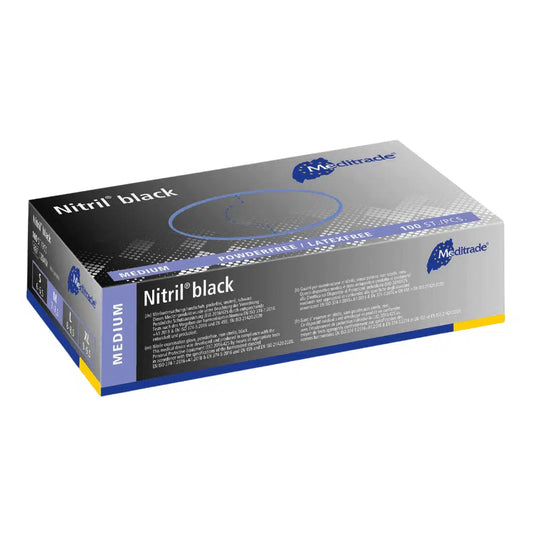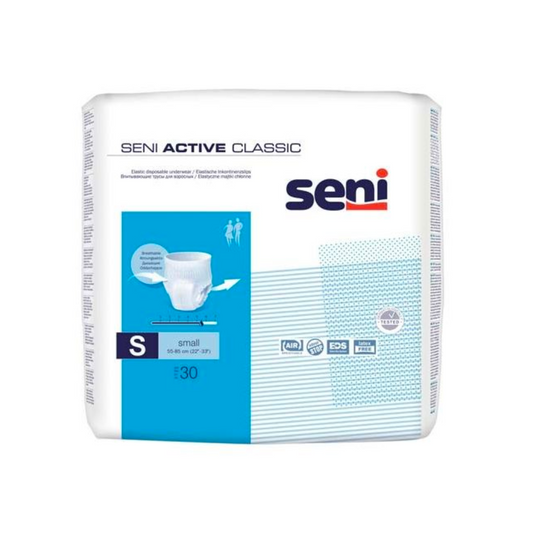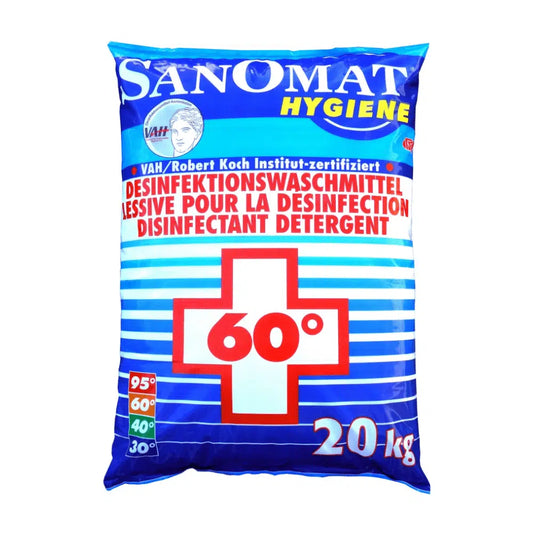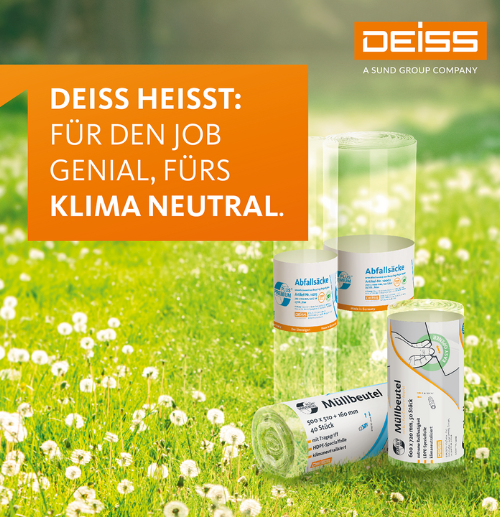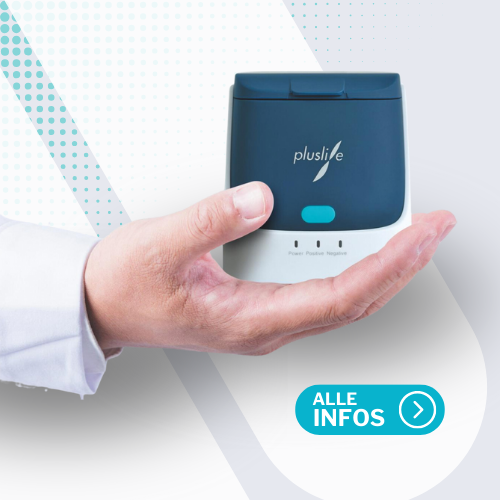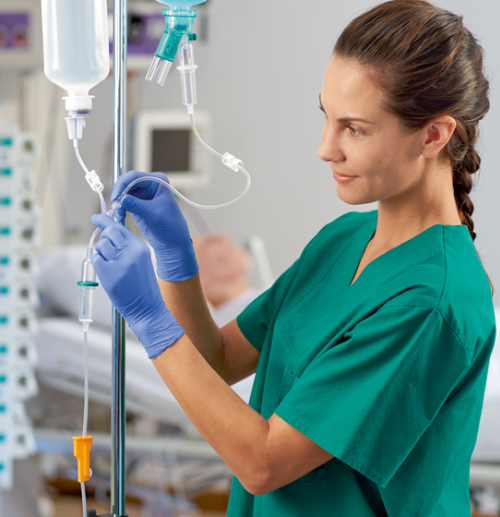
Why hand disinfection is more important than ever
With the changeable weather in spring, which often leads to temperature fluctuations, our immune system is particularly challenged. The combination of cold, wind and suddenly onset heat can weaken our defense system and increase the susceptibility to infections. Viruses and bacteria that cause colds, flu or gastrointestinal diseases take this opportunity to spread. The right hand disinfection is an effective way to protect itself from these pathogens.
The importance of hand disinfection
Our hands are a main transmission path for pathogens. They come into contact with surfaces that can be contaminated with viruses and bacteria such as door handles, handrails and even our own smartphones. If we then touch our face in particular mouth, nose or eyes, the way for these pathogens is free to penetrate our bodies and cause infections.
Understanding the skin flora: resident and transient germs
Our skin houses two types of bacterial flora: the resident and the transient Flora.
The Resident flora consists of microorganisms that live permanently on our skin and usually do not cause diseases. These bacteria even help protect us from harmful germs by preventing them from settling and increasing on our skin.
The Transient flora Describes bacteria that can only be found on the skin temporarily. These bacteria are usually not part of our natural skin flora and can trigger diseases under certain circumstances.
Washing your hands or disinfecting?
Wash your hands is the process in which you mechanically remove dirt with water and soap and microorganisms. The thorough rubbing and scrubbing, especially between the fingers and under the nails, eliminates visible dirt as well as bacteria and viruses. It is particularly important after the toilet, contact with raw food or when the hands are clearly dirty. It is important to know that microorganisms are removed when washing hands, but not or only partially killed.
Disinfect Uses alcohol -based means to kill most germs on your hands or make it harmless. This method is effective against many bacteria and viruses and offers fast hygiene solution if no water and soap are available. Disinfectants are also suitable in order to offer an additional protection level after washing the hands, especially in risky environments such as hospitals.
When should you disinfect your hands?
Thorough hand disinfection is particularly important:
- Before and after eating
- After using the toilet
- After contact with waste
- After touching surfaces in public areas, e.g. B. in transport or shops
- Before and after contact with sick
- After sneezing, coughing or sneaking
- Before touching babies or immunocompromised people
Instructions for correct hand disinfection
-
Select disinfectant: Use a medium with at least 60% alcohol content. It can be a gel or liquid, depending on the personal preference and skin type.
-
Apply quantity: Put a sufficient amount of the disinfectant on the dry palm in order to be able to completely cover both hands.
-
Rub in: Rub the disinfectant across all areas of your hands, including palms, back, between the fingers, under the nails and on the wrists.
- Let absorb: Let the disinfectant dry completely in the air. Do not swipe or rinse your hands because this reduces the effectiveness.
How do disinfectants work?
Disinfectants that are intended for human skin mostly contain chemical substances on an alcoholic basis that have a targeted effect against microorganisms. This alcohol destroys the proteins and structures in the cells of the microorganisms, which leads to the germs die.
When buying a disinfectant, the spectrum of effects is particularly important. On the product label you can find information about which types of microorganisms the means is effective. A distinction is made between different main categories of effectiveness:
- Bactericidal: Effective against bacteria
- Levurocide: Effective against yeast mushrooms
- fungicide: Effective against mushrooms
- Sporicide: Effective against spores
- Limited virucid: Effective against enveloped viruses
- Limited viruzid plus: Effective against specific enveloped viruses and certain uncollected viruses
- Virucid: Effective against all viruses
This division helps users select the right disinfectant for their specific needs and ensure that they receive effective protection against the relevant microorganisms.
But what happens to the natural skin flora? Although disinfectant aims to eliminate harmful germs, they can also affect the useful bacteria of the resident skin flora (as already explained above, this resident flora consists of microorganisms that live permanently on our skin and normally protect functions). With frequent use of disinfectants, this useful flora could also be reduced, which can make the skin more susceptible to infections. It is therefore important to use disinfectants in a targeted and careful manner, especially in situations in which there is a high risk of transmission of diseases.
Prevention of nosocomial infections
Nosocomial infections, often also referred to as hospital infections, are infections that acquire patients during a hospital stay and which are not related to their original diagnosis or their reason for the briefing. These infections can have serious effects that extend the treatment time and, in some cases, even fatal. A key to prevention of these infections is effective hand hygiene, especially hand disinfection.
Hand hygiene is the simplest and most effective way to prevent nosocomial infections. It is crucial that medical staff, patients and visitors understand the importance of hand hygiene and regularly and correctly disinfect the hands, in particular:
The World Health Organization (WHO) has defined the "5 moments of hand disinfection" to ensure the security of patients and minimize the risk of infections. These five key moments are:
-
Before contact with patient: The hands should be disinfected before you have direct contact with a patient. This protects the patient from harmful germs that could be on their hands.
-
Before aseptic activities: Before performing aseptic actions such as the laying of a catheter or an injection, the hands should be thoroughly disinfected.
-
After contact with potentially infectious material: After you have come into contact with body fluids or other potentially infectious materials, it is crucial to disinfect your hands to prevent the spread of germs.
-
After contact with patient: Immediately after contact with a patient, you should clean your hands to protect yourself from possible pathogens and not to transfer them to others.
- After contact with the patient environment: Even if you have no direct contact with a patient, surfaces in the patient's vicinity can be contaminated with pathogens. Therefore, the hands should be disinfected after contact with objects or surfaces near the patient.
These five moments are of central importance to prevent the transmission of healthcare infections and to protect both patients and health personnel. It is important to be aware of these moments and to consistently implement hand hygiene.

Difference between liquid disinfectant and gel
When choosing the correct disinfectant, liquid means and gels are often available. Liquid disinfectants are usually drying faster and feel less sticky on the hands. Gels, on the other hand, can have a somewhat thicker consistency that enables a longer exposure time on the skin, which can be advantageous for very dry hands. Both forms are effective as long as they are applied correctly and have the recommended alcohol content. The recommended alcohol content in hand disinfectants is usually between 60% and 95%. The World Health Organization (WHO) and the Centers for Disease Control and Prevention (CDC) recommend an alcohol content of at least 60% for the effective killing of most viruses and bacteria. Products with an alcohol content in this area are effective in reducing and eliminating most pathogens on the hands.
Conclusion
A thorough hand disinfection is a simple but extremely effective way to prevent the spread of diseases and protect your own health. By using the right products and following the recommended technology, you can make sure that the hands remain free of harmful germs without affecting the useful skin flora too much. Especially in times of increased risk of infection, it is more important than ever to take hand hygiene seriously and to integrate it as an integral part of the daily routine.
